Goth 2 Boss Digital E2E Quilting Design
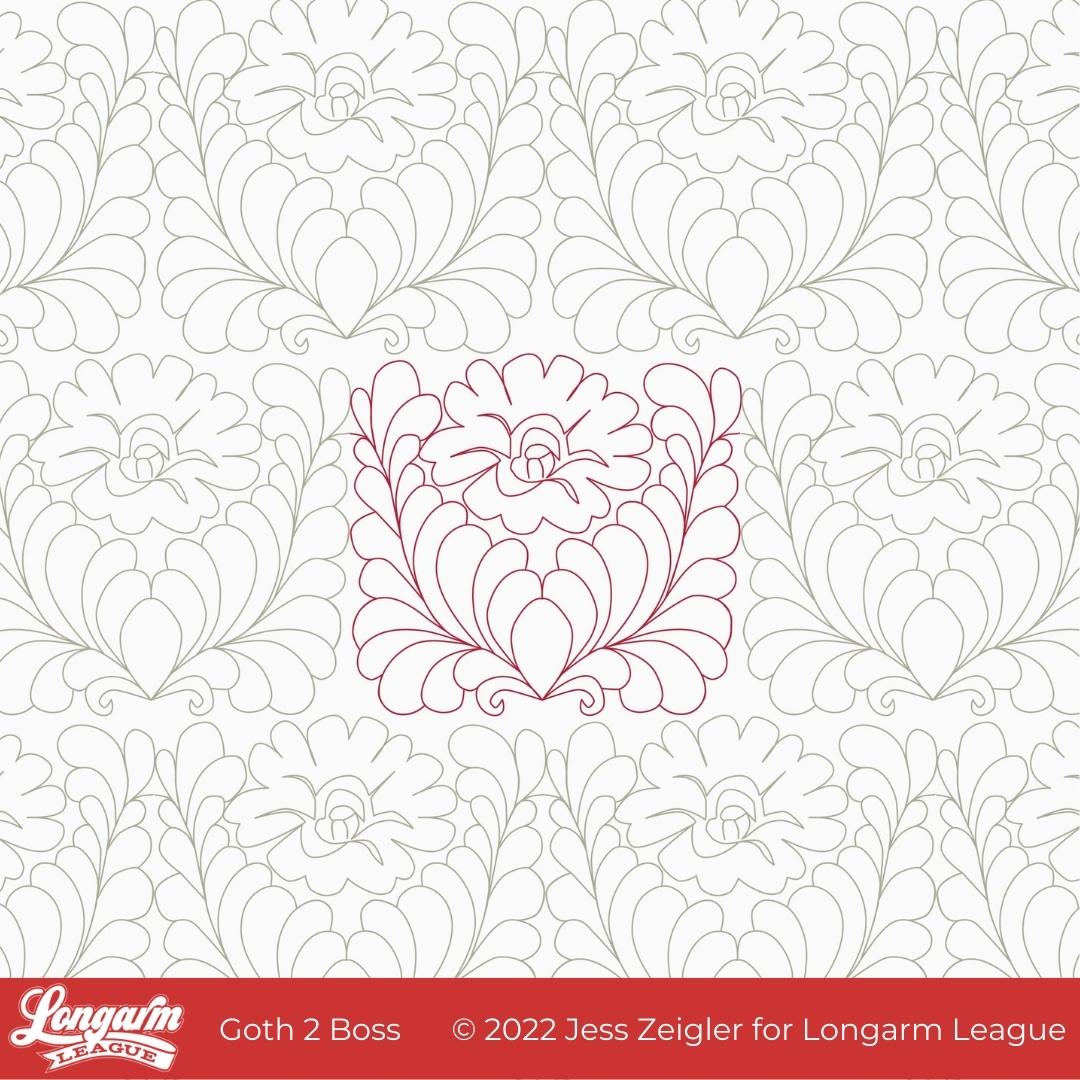
I feel like I owe you an explanation for the name of this design. That will be coming soon.
But first, I thought I'd tell you the inspiration behind it. Back in December of 2021, Josh and I were watching the series called Landscapers that had recently premiered on HBO. It is based on a crime set in the 1990s in England. The series is visually moody, drab, and dark. There's a scene in an upstairs bedroom that had deep red, ornate wallpaper and I found myself asking Josh to stop and go back to a frame that showcased the wallpaper better.
This is what caught my eye.
While it's definitely not the same, this was my first sketch from the inspirational wallpaper:

After playing around with the design a number of times on my reMarkable tablet, I slowly let the feathers get plumper and more prominent as part of the design, allowing me to fill in the space more evenly while keeping the floral center.
Here's how the design evolved as I was sketching:
When it comes to feathers,...
Top 20 Modern Edge to Edge Quilting Designs

Buying new digital pantograph designs is often as enticing as picking up a fat quarter—or ten!—at your local quilt shop. They can be oh-so-appealing, but which ones will you actually use the most in your business?
I can remember designs that I fell in love with and purchased on the spot, yet never actually used on a client’s quilt top. Conversely, there were several that I used over and over again, wringing every drop of value out of them. I developed my favorites based on ease of use and versatility. Of course, a longarm quilter's personal style and preferences can certainly play a part when making recommendations to clients, as well.
It’s been a while since I’ve quilted for others, so I thought it would be fun to ask other quilters what their current go-to pantographs are. I invited quilters from the Longarm League membership—along with other quilters who follow our social media accounts or subscribe to our email newsletter—to chime in with their current favorite edge-to-edge design...
Blackbird Digital Quilting Design
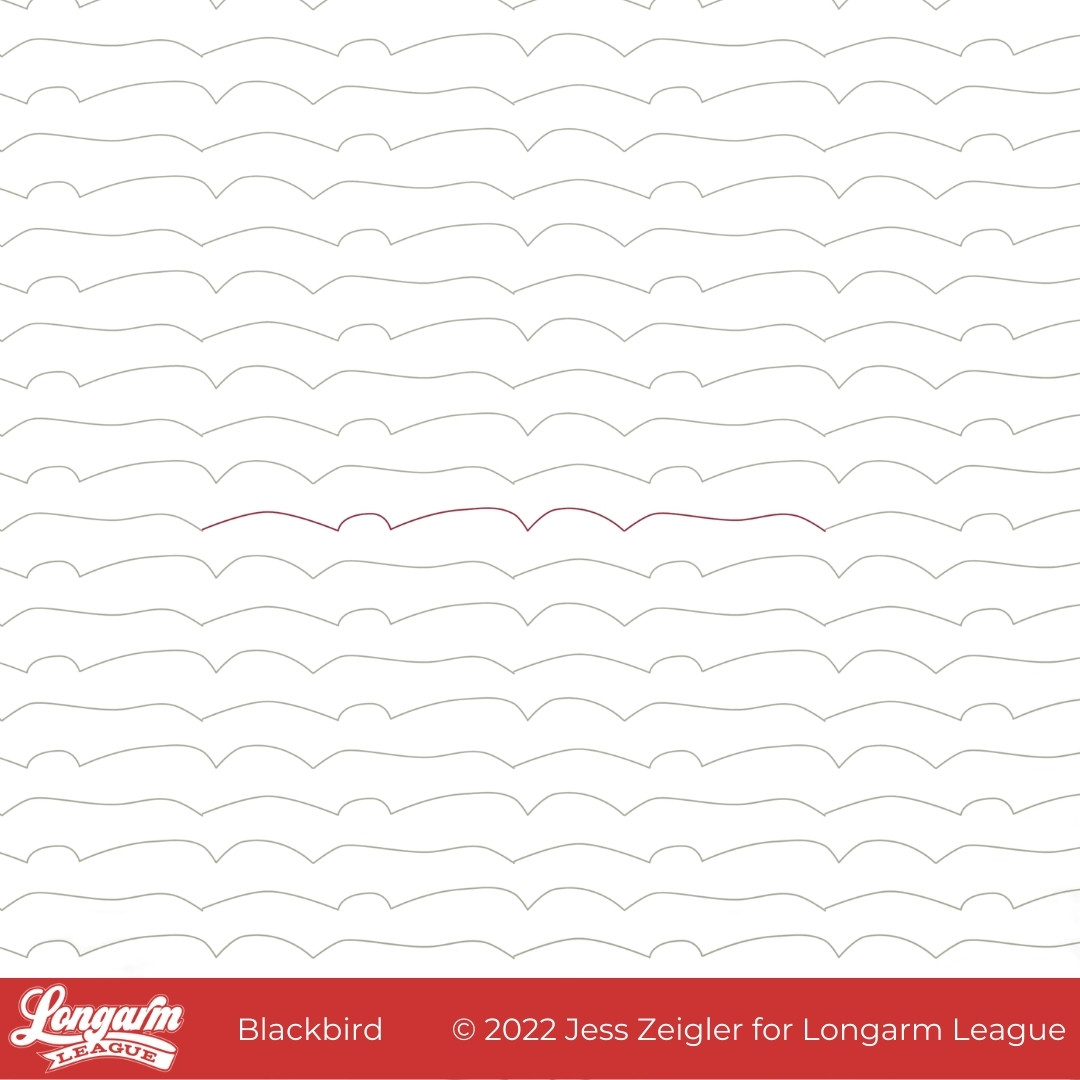
In our Longarm League private community, we have a forum where we can ask each other for pantograph suggestions for clients' quilts. Over and over again, I find myself recommending really simple designs like straight lines, Good Vibrations, Rumble, Wishbone, Soho, etc.
I wanted to make a REALLY simple design that also looked... organic. Blackbird is what resulted.
I simultaneously really like this one and am—what's the word, embarrassed?—by its simplicity.
Hey, they don't all have to be head-scratchers. You know, those designs that you have to stare at to find the repeat or are mesmerized by the complexity of the design. This one is pretty darn straightforward.
I'll give you four great reasons why we shouldn't shy away from offering simple designs to our clients:
1. FAST - I loaded up this up baby quilt and stitched it all out in an hour's time.
2. EFFICIENT - My machine uses the smaller L bobbins and this took less than one bobbin.
3. PROFITABLE - The faster and more...
Best Fronds Modern Edge to Edge Quilting Design

Longarm League member Rebecca Grace Quilting (if you like reading quilting blogs, you'll love Rebecca's!) sent me an email a while back with a photo of home dec fabric, noting the design would make a great digital pantograph design.
I agreed wholeheartedly and tucked it away in my brain to think about later. You see, being the "Commish" of the Longarm League means that 95+% of the time, I'm working on all things other than designing pantographs. I love this part of the job, though, and hope to devote more time to it in the future.
The leafy design was very appealing to me, but the biggest problem was that I could NOT figure out what portion of the design I could repeat to get the overall effect. It took a few days of playing around in Art and Stitch and doodling on my Remarkable tablet to crack the code.


Once that code was cracked, the other major dilemma was to figure out how to sequence the stitch path so that it'd make "nice" lines. It was pretty clear that I'd ne...
Echoed Swirls and the Mini Modern Heart Quilt
This is not a drill. I was able to work on a quilt top I started making for myself back in 2017.
About a month ago, I was invited to a quilting retreat at Stitch Supply Co. in Altoona, Wisconsin. I had the best time! It really supercharged my desire for patchwork again. Now I want to finish WIPs and start new projects with the fabulous fabric I bought there.
For this project, the quilt pattern I used is called Mini Modern Heart. It's actually a foundation paper piecing block I designed to use up small scraps of fabric. It certainly is a good pattern for doing just that!
My original intention was to make one block per day for a year—but, you know—life happened and I came up WAYYYY short of my goal.

At the retreat, I decided to wrap-up the project once and for all. I abandoned my original plan (365 blocks) when I realized that I had enough blocks to make a nicely sized lap quilt.
And guess what?! I ended up with 11 columns of 13 blocks each, which is drumrolllllllll... 143 ...
Beleaf It or Not Digital Pantograph
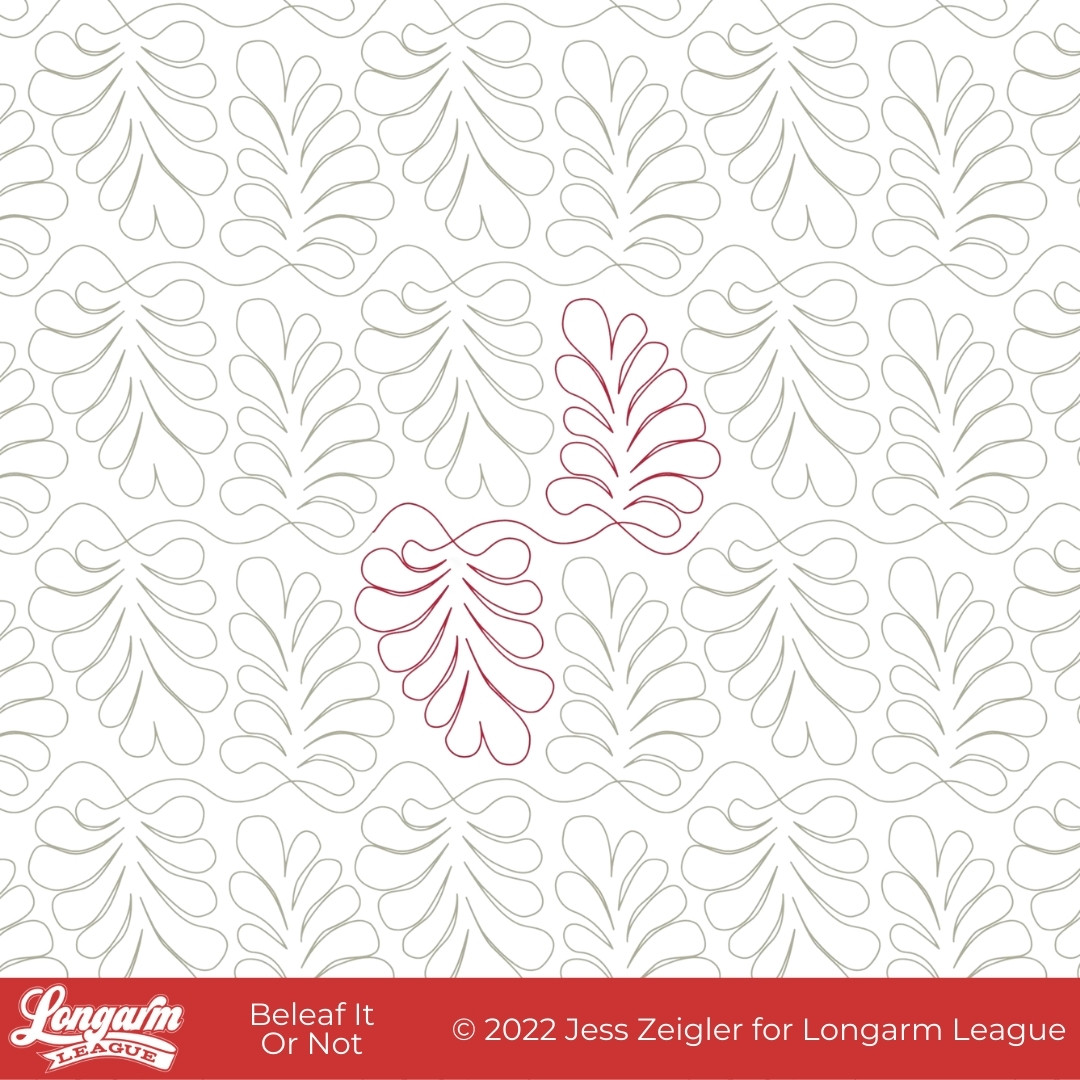
Quilty friends, naming designs is hard work. I was struggling to come up with a name for this design so I texted my mom and sister a photo of the finished sample, asking them for help. My sister's first response was Beleaf It Or Not and I laughed out loud so much that I had to go for it.

Seinfeld—because of the huge influence in our lives—has become part of our shared language. 'Beleaf It or Not' immediately reminded me of the episode that features George's outgoing answering machine message where he changed the words to the song "Believe It or Not".
THAT is what makes me giggle every time I think of it.

When I design edge to edge pantographs, my number one goal is to create interesting textures. I really love the repeated round shapes of the "leaves"—or as quilters would call them, feathers.

Here are my specifics using a baby-sized sample in the photos (45" x 45" quilt size):
Row height: 5.94"
Gap: -4.86"*
Pattern height: 10.8"
Offset: none
Backtracking: none
*Gap refe...
Mako and Thresher Digital Quilting Designs
Mako

I promise I'm not six years old and obsessed with sharks... even though both of these designs happen to named after sharks. I don't see it becoming a trend.
I came up with this design about a year ago. I originally named it Shark Smile because
- the repeat looks like a shark's tooth
- there's a song called "Shark Smile" from a band I love called Big Thief. Click here to listen to the song.
For fear that this blog post could start to remind you of those recipes you find online with an ENTIRE personal story attached {when you just want the recipe}, I do have a brief anecdote.
We saw Big Thief perform "Shark Smile" in Des Moines several years ago. The venue was so small and intimate. At one point of the song, the lyrics are "...as we went howling through the edge of south Des Moines". After the song ended, the lead singer talked about being nervous to sing that line in front of us—I don't know if she realized it beforehand. It was the perfect thing to say. We all c...
Sprawl Digital Quilting Design

Quilty friends, this design is called Sprawl.
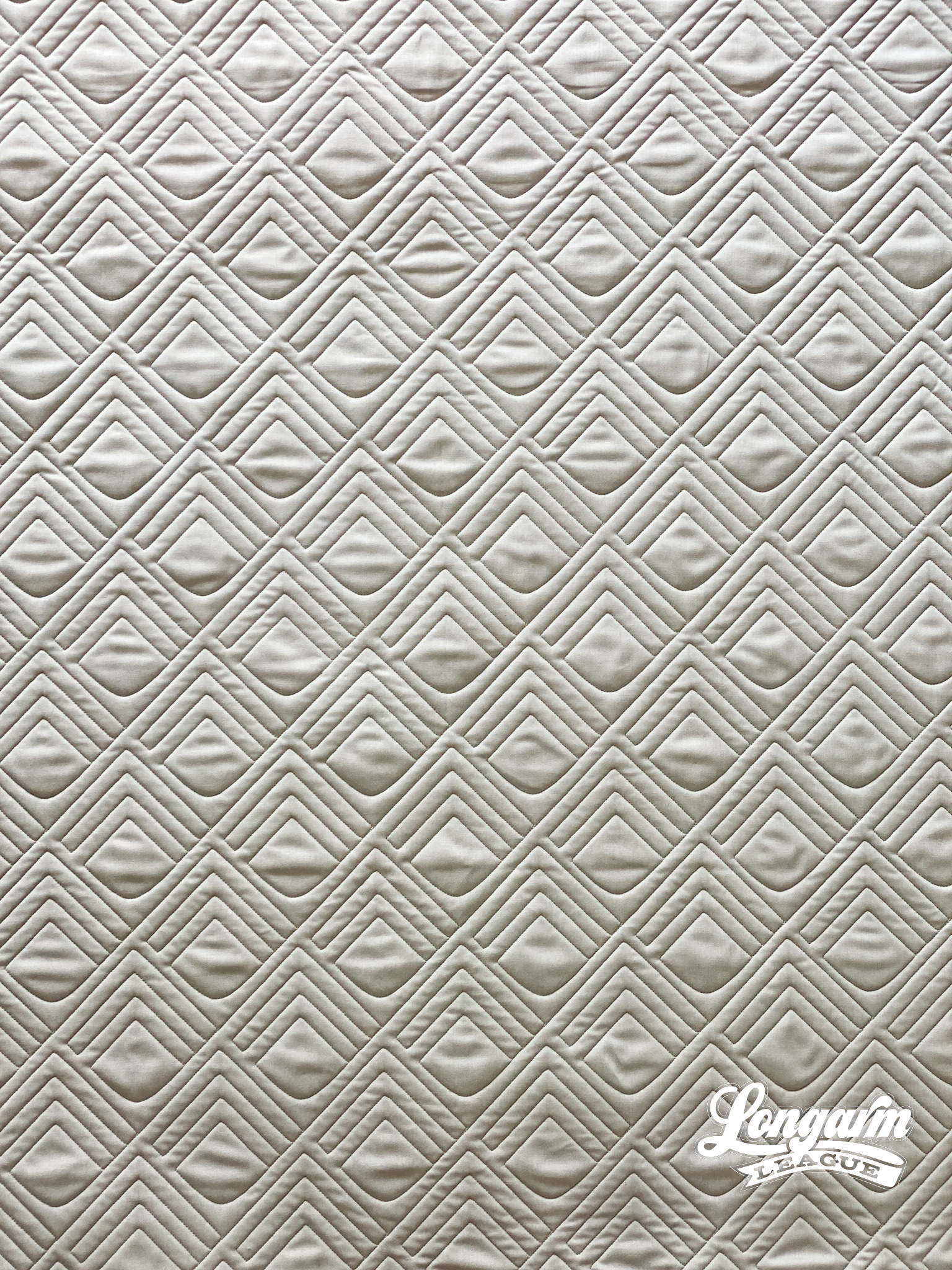
I love, love, love using echoed lines and shapes to make a textural impact. You can see that I used that technique with this design while also incorporating a small curve.

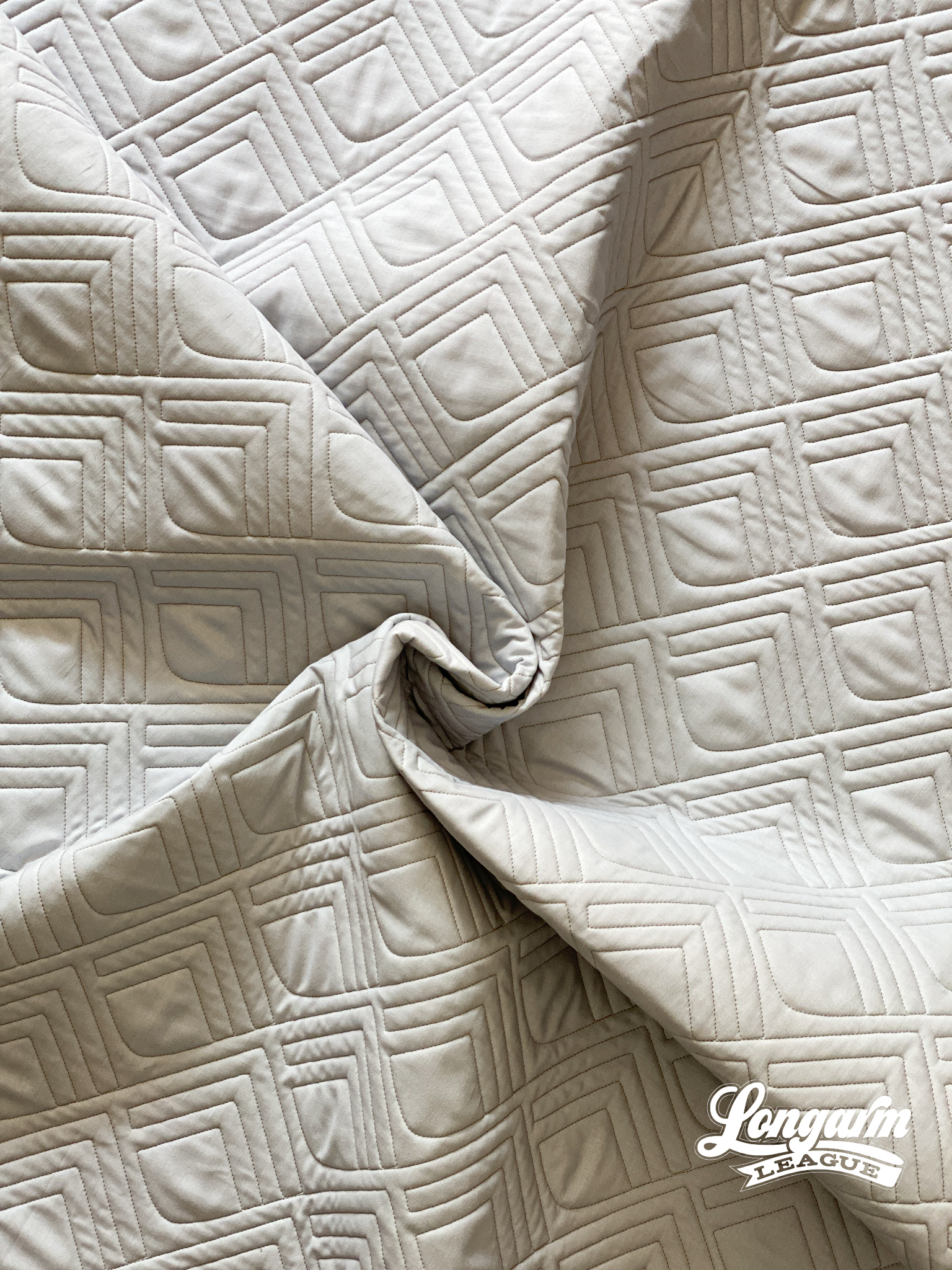
Here are my specifics using a baby-sized sample in the photos (45" x 50" quilt size):
Row height: 3"
Gap: -1.478"*
Pattern height: 4.478"
Offset: 50%
Backtracking: minimal
*Gap refers to the space I'm allowing between rows. I use an Intelliquilter for my computerized quilting, and because that measurement is quantifiable, I provide it here.
The row height PLUS the noted gap amount totals the "pattern height". If you don't use an Intelliquilter, you'll likely want to start sizing with the pattern height number and adjust the spacing between rows to your liking. You may not have a measurement available that tells you the measurement between rows, and that's okay.
We've begun adding a PDF to our zipped file so that you can print out design images and add your ...
Fleur Drive Digital Pantograph Quilting Design

Meet Fleur Drive. It's got a sweet sophistication that'll add a touch of class to your next quilt top.
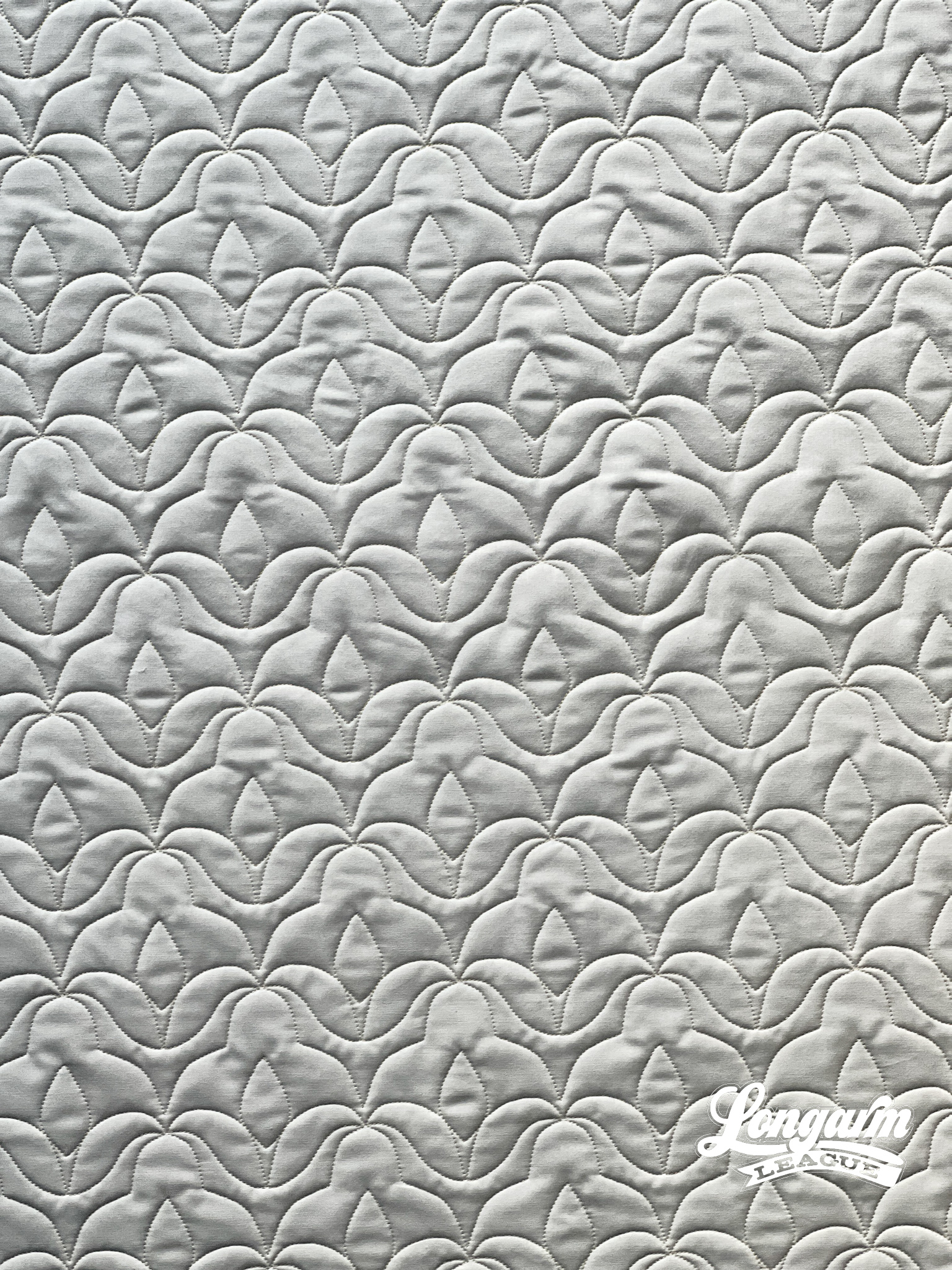
The scalloped bottom edge of the motif has a beautiful way of integrating into the row below. One man's ceiling is another man's floor, as Paul Simon would say.

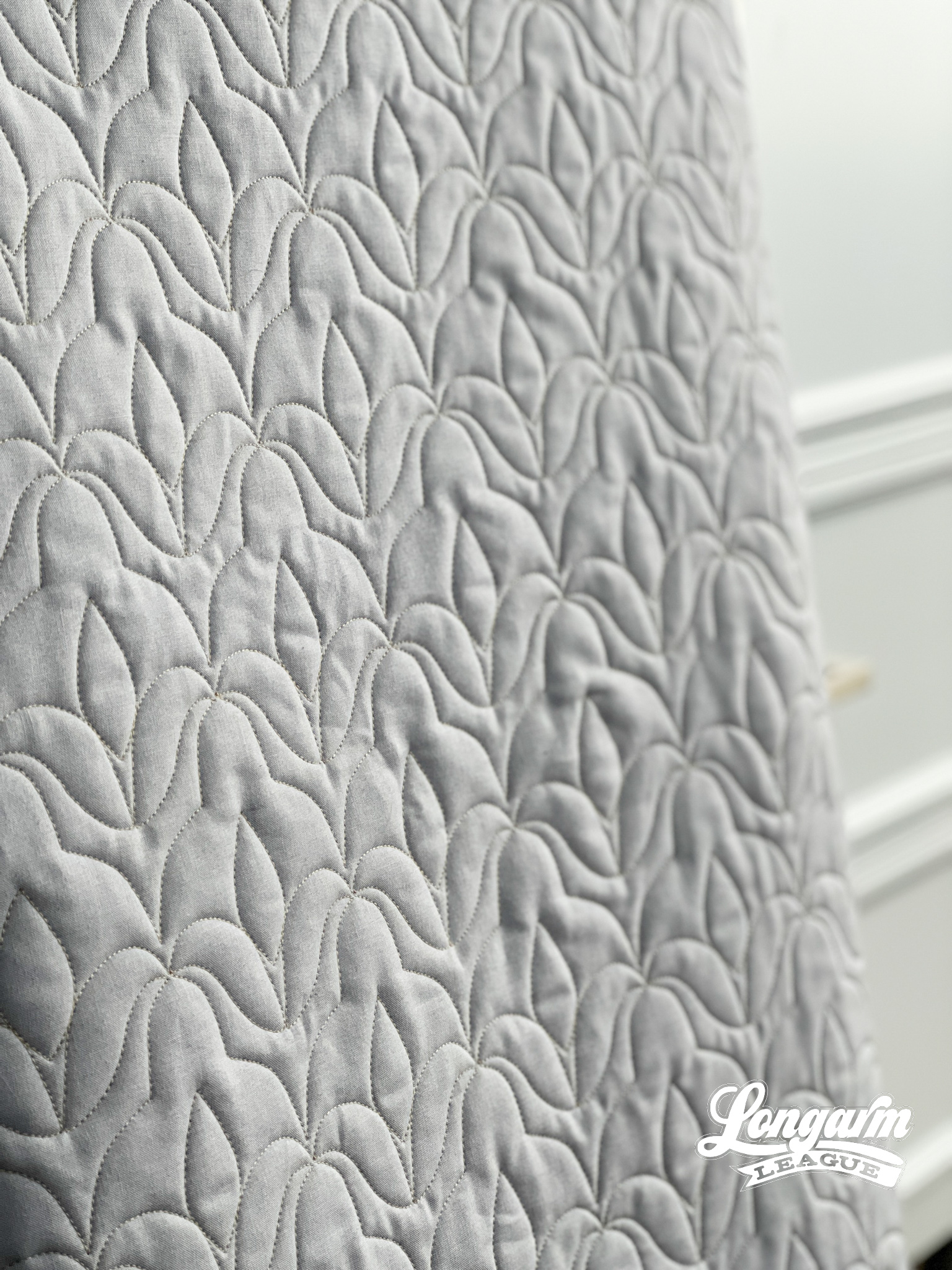
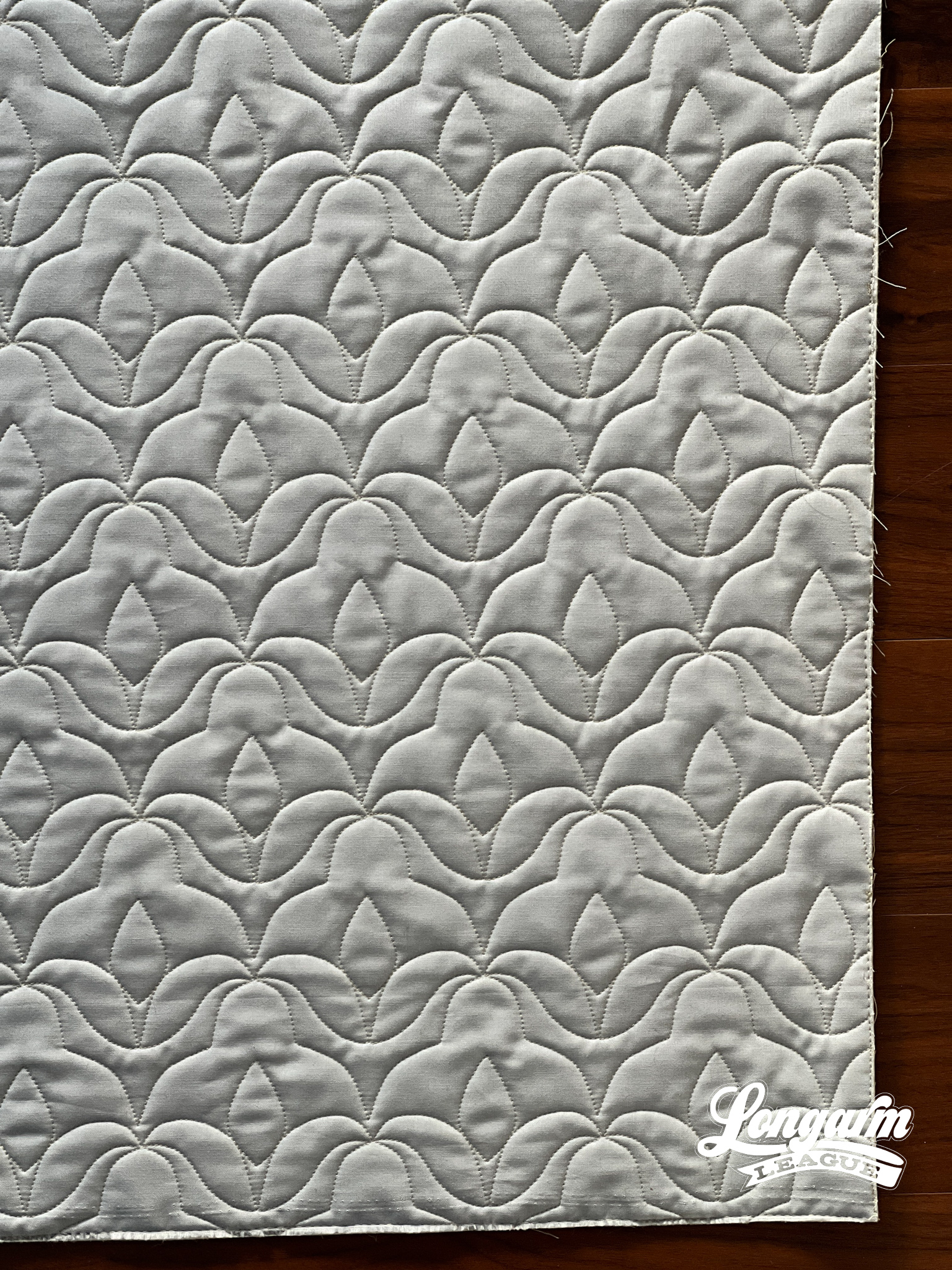
The stitching is simple and straight-forward. It does require every other row to be offset or staggered.

Here are my specifics using a baby-sized sample in the photos (45" x 50" quilt size):
Row height: 3"
Gap: -1.225"
Pattern height: 4.225" (distance from the top to bottom of the repeat)
Offset: 50%
I use an Intellquilter as my computer system, so your terms might differ. I can tell you I started with a pattern height at nearly 5" and it was too large of a scale for my taste... so I ripped out the first row and started again. Part of that might have been due to the scale in relation to this smallish quilt.

There's no backtracking with this design. It does require a 50% offset, or staggering every other row.
Mister Marbles Digital Pantograph Design

Mister Marbles is a fun-time pantograph when your top needs some extra texture, movement, and pizzazz!

When I look at the design, I think of a marble maze or marble run game. More on the name later, it gets much more nerdy, I promise.
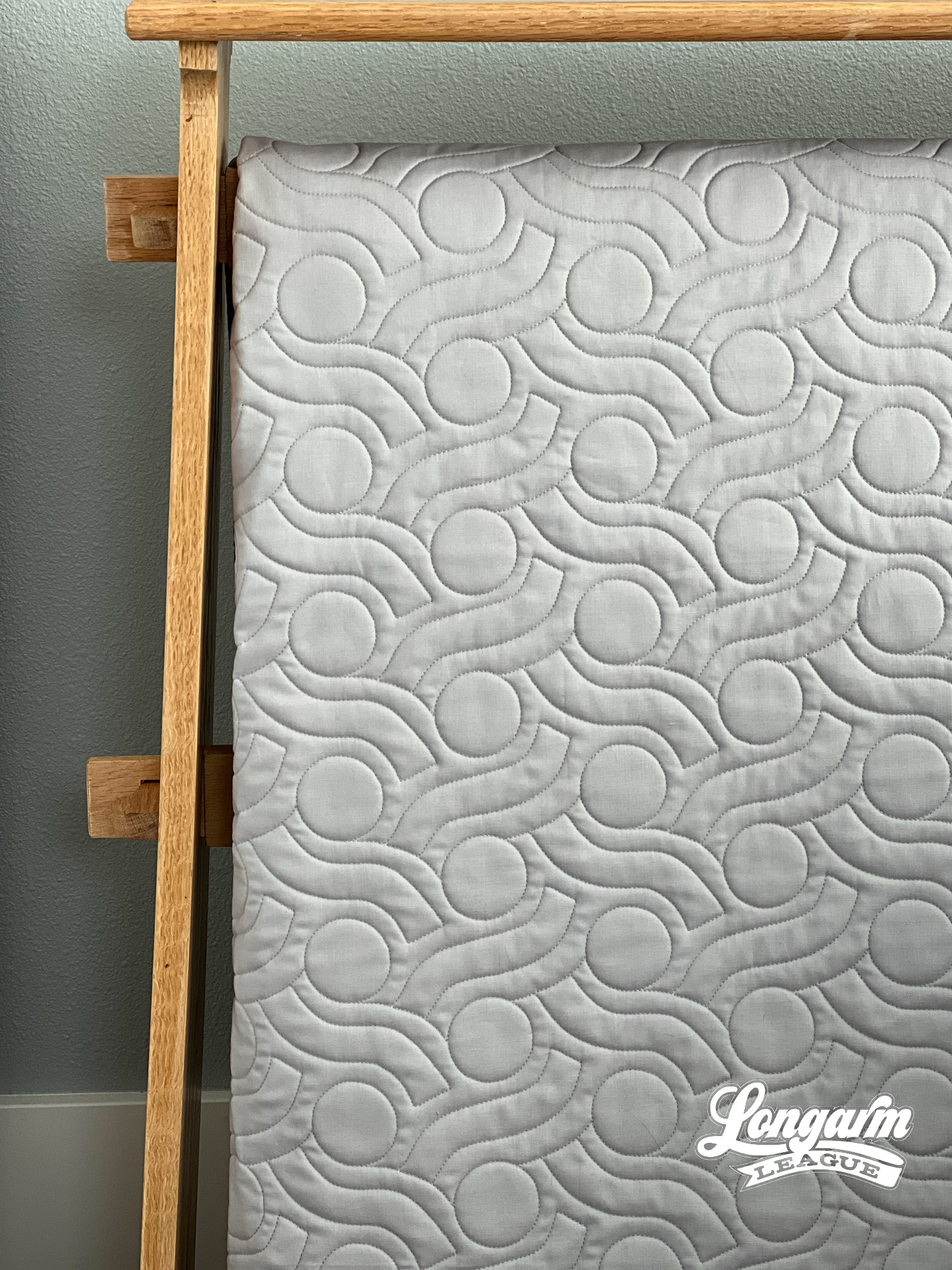
I think this design would look great on quilt tops that are modern, for kids, or have fun and festive fabrics.
The movement is subtle, but it's still there.
This one has some wiggle room when you're stitching out the rows, so that's nice! It makes it a bit more user friendly than some of my other trickier designs.
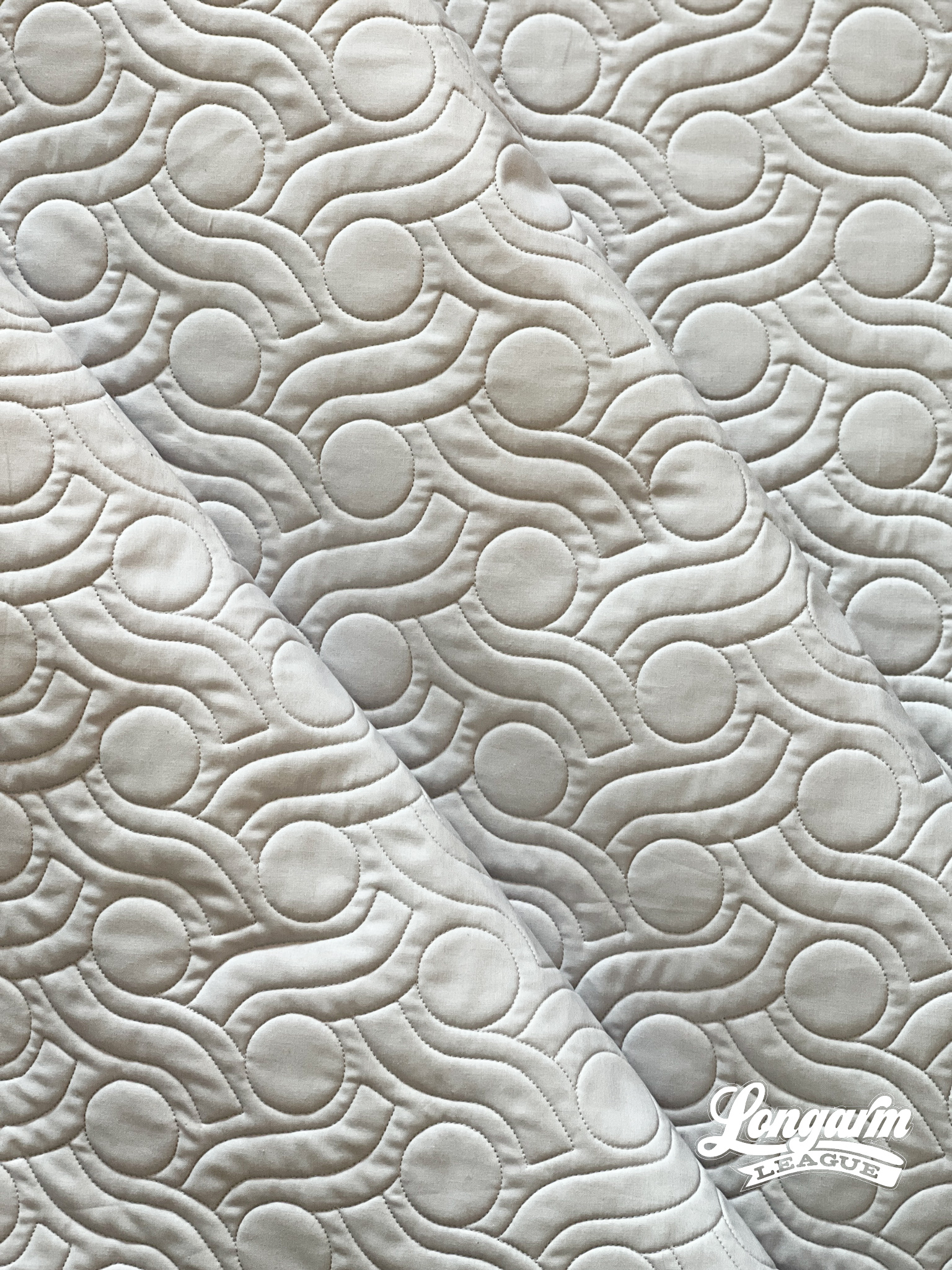
There is minimal backtracking involved with this design, see the video of the stitch path at the top of this post, it's very doable.
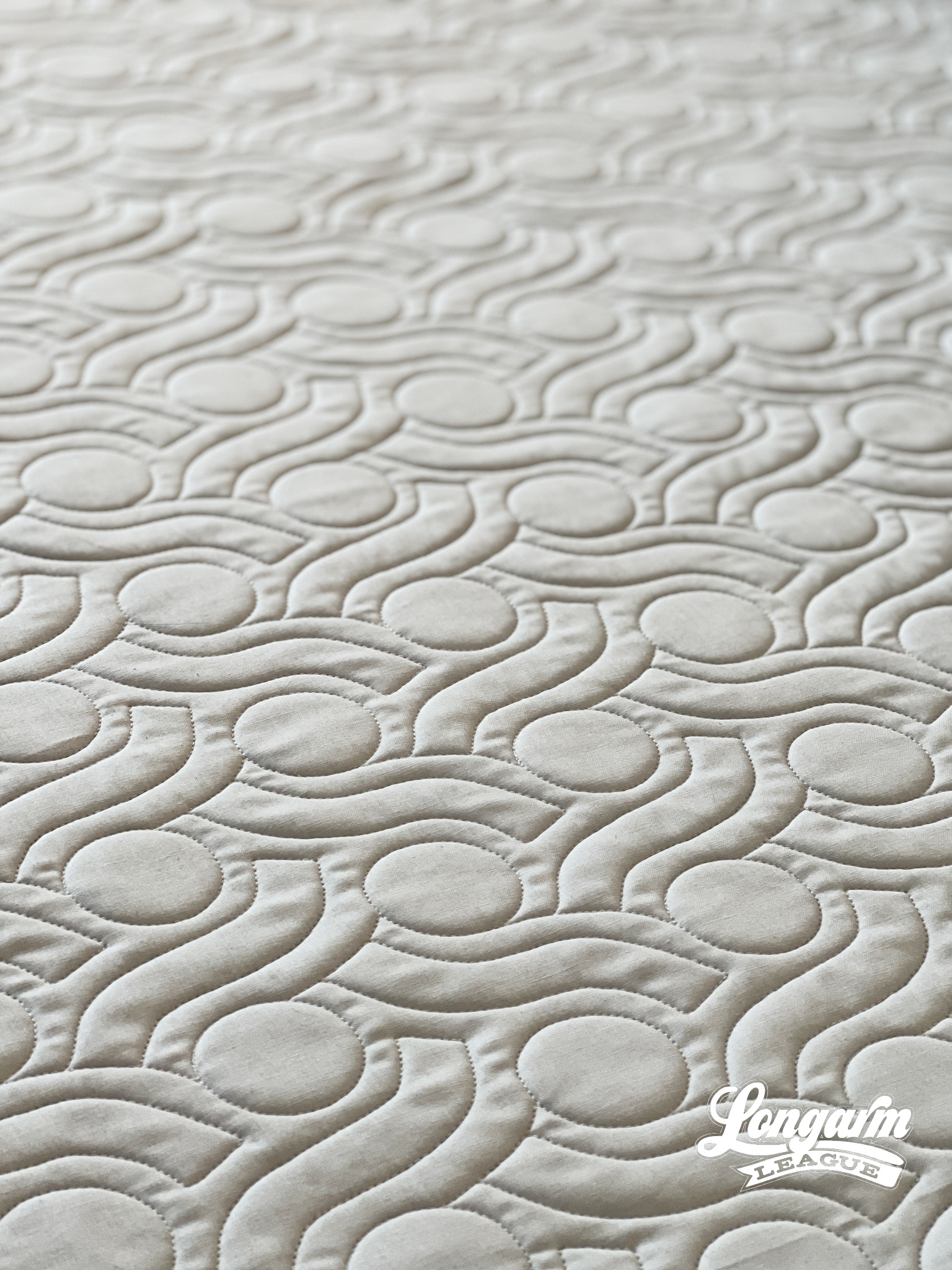
Here are my specifics using a baby-sized sample in the photos (45" x 50" quilt size):
Row height: 3.5"
Gap: -1.167"
Pattern height: 4.667" (this is the total span of the design from the top to the bottom of the repeat)
I use an Intellquilter as my computer system, so your terms might differ.

With th...









